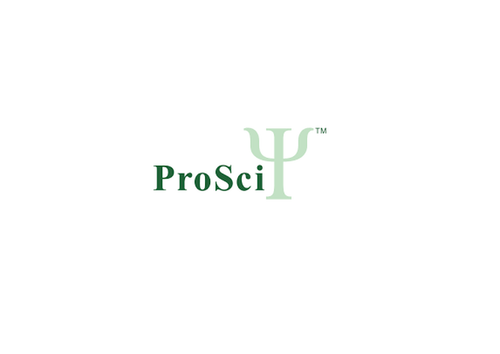Product Description
BRUNOL6 Antibody | 25-665 | ProSci
Host: Rabbit
Reactivity: Human
Homology: N/A
Immunogen: Antibody produced in rabbits immunized with a synthetic peptide corresponding a region of human BRUNOL6.
Research Area: Other
Tested Application: E, WB
Application: BRUNOL6 antibody can be used for detection of BRUNOL6 by ELISA at 1:62500. BRUNOL6 antibody can be used for detection of BRUNOL6 by western blot at 1 μg/mL, and HRP conjugated secondary antibody should be diluted 1:50, 000 - 100, 000.
Specificiy: N/A
Positive Control 1: Cat. No. 1211 - HepG2 Cell Lysate
Positive Control 2: N/A
Positive Control 3: N/A
Positive Control 4: N/A
Positive Control 5: N/A
Positive Control 6: N/A
Molecular Weight: 50 kDa
Validation: N/A
Isoform: N/A
Purification: Antibody is purified by peptide affinity chromatography method.
Clonality: Polyclonal
Clone: N/A
Isotype: N/A
Conjugate: Unconjugated
Physical State: Liquid
Buffer: Purified antibody supplied in 1x PBS buffer with 0.09% (w/v) sodium azide and 2% sucrose.
Concentration: batch dependent
Storage Condition: For short periods of storage (days) store at 4˚C. For longer periods of storage, store BRUNOL6 antibody at -20˚C. As with any antibody avoid repeat freeze-thaw cycles.
Alternate Name: BRUNOL6, CELF6, BRUNOL6
User Note: Optimal dilutions for each application to be determined by the researcher.
BACKGROUND: BRUNOL6 is a RNA-binding protein implicated in the regulation of pre-mRNA alternative splicing. It mediates exon inclusion and/or exclusion in pre-mRNAs that are subject to tissue-specific and developmentally regulated alternative splicing. BRUNOL6 specifically activates exon 5 inclusion of TNNT2 in a muscle-specific splicing enhancer (MSE) -dependent manner. It also promotes exon exclusion of INSR pre-mRNA.Members of the CELF/BRUNOL protein family contain two N-terminal RNA recognition motif (RRM) domains, one C-terminal RRM domain, and a divergent segment of 160-230 aa between the second and third RRM domains. Members of this protein family regulate pre-mRNA alternative splicing and may also be involved in mRNA editing, and translation.
 Euro
Euro
 USD
USD
 British Pound
British Pound
 NULL
NULL









![BRUNOL6 Antibody (N-term) [APR30830G] BRUNOL6 Antibody (N-term) [APR30830G]](https://cdn11.bigcommerce.com/s-452hpg8iuh/images/stencil/500x659/products/871075/1163142/logo__92149.1659788186__53706.1659867119.png?c=2)
